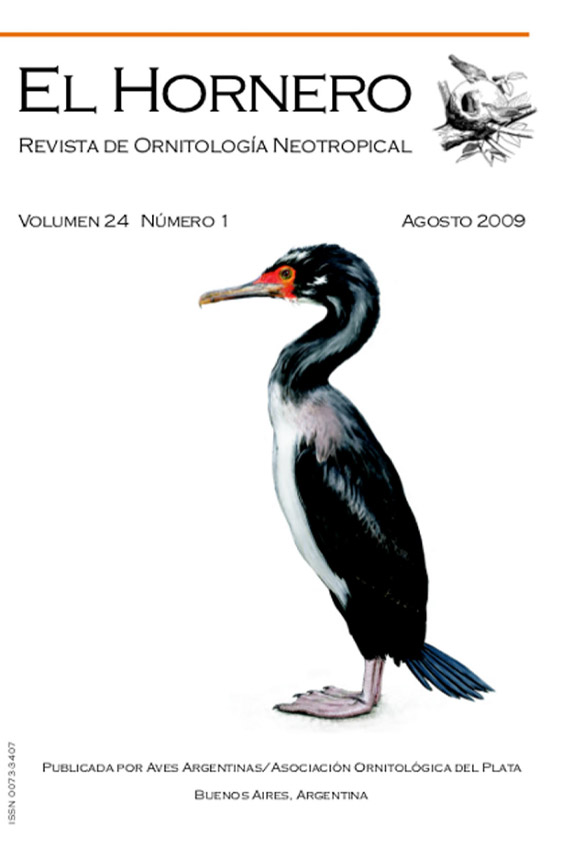Abstract
In this paper we present a technique to estimate densities and quantitatively evaluate population trends of Spotted Nothura (Nothura maculosa) in grasslands habitats. We evaluated Spotted Nothura density in the hills of Tandil, Buenos Aires Province, using two techniques: line transects with variable width and strip transects. For the latter, we also evaluated the assumption that the probability of detecting an individual within the strip was 1. Density values obtained with both techniques were similar (1.20 ind/ha for variable width transects, and 1.16 ind/ha for strip transects). We did not find significant differences among frequencies of individuals detected at different distances within the strip. We conclude that strip transects constitute a robust and efficient technique to evaluate, with a minimum cost, population trends of Spotted Nothura in grasslands and agricultural habitats. Our density estimates are among the highest reported for Buenos Aires Province, suggesting that the hills of Tandil could represent a refuge for this species.
References
BERNARDOS J (2002) Evaluación de métodos para el censode la perdiz común (Nothura maculosa) en la provinciade La Pampa. Tesis de Magíster, Universidad Nacio-nal de Córdoba, Córdoba
BILENCA D Y MIÑARO F (2004) Identificación de áreasvaliosas de pastizal en las Pampas y Campos de Argentina,Uruguay y sur de Brasil (AVPs). Fundación Vida Sil-vestre Argentina, Buenos Aires
BUCKLAND ST, ANDERSON DR, LAAKE JL, BORCHERS DL YTHOMAS L (2001) Introduction to distance sampling:estimating abundance of biological populations. OxfordUniversity Press, Oxford
BUMP G Y BUMP J (1969) A study of the spotted tinamousand the pale spotted tinamous of Argentina. US Fishand Wildlife Service Special Scientific Report -Wildlife 120, Washington DC
DI GIACOMO AS Y KRAPOVICKAS S (2005) Conservingthe grassland important bird areas (IBAs) of South-ern South America: Argentina, Uruguay, Paraguay,and Brazil. Pp. 1243–1249 in: RALPH CJ Y RICH TD(eds) Bird conservation implementation and integrationin the Americas: proceedings of the Third InternationalPartners in Flight Conference. USDA Forest ServiceGeneral Technical Report PSW-GTR-191, Albany

This work is licensed under a Creative Commons Attribution-NonCommercial 4.0 International License.





